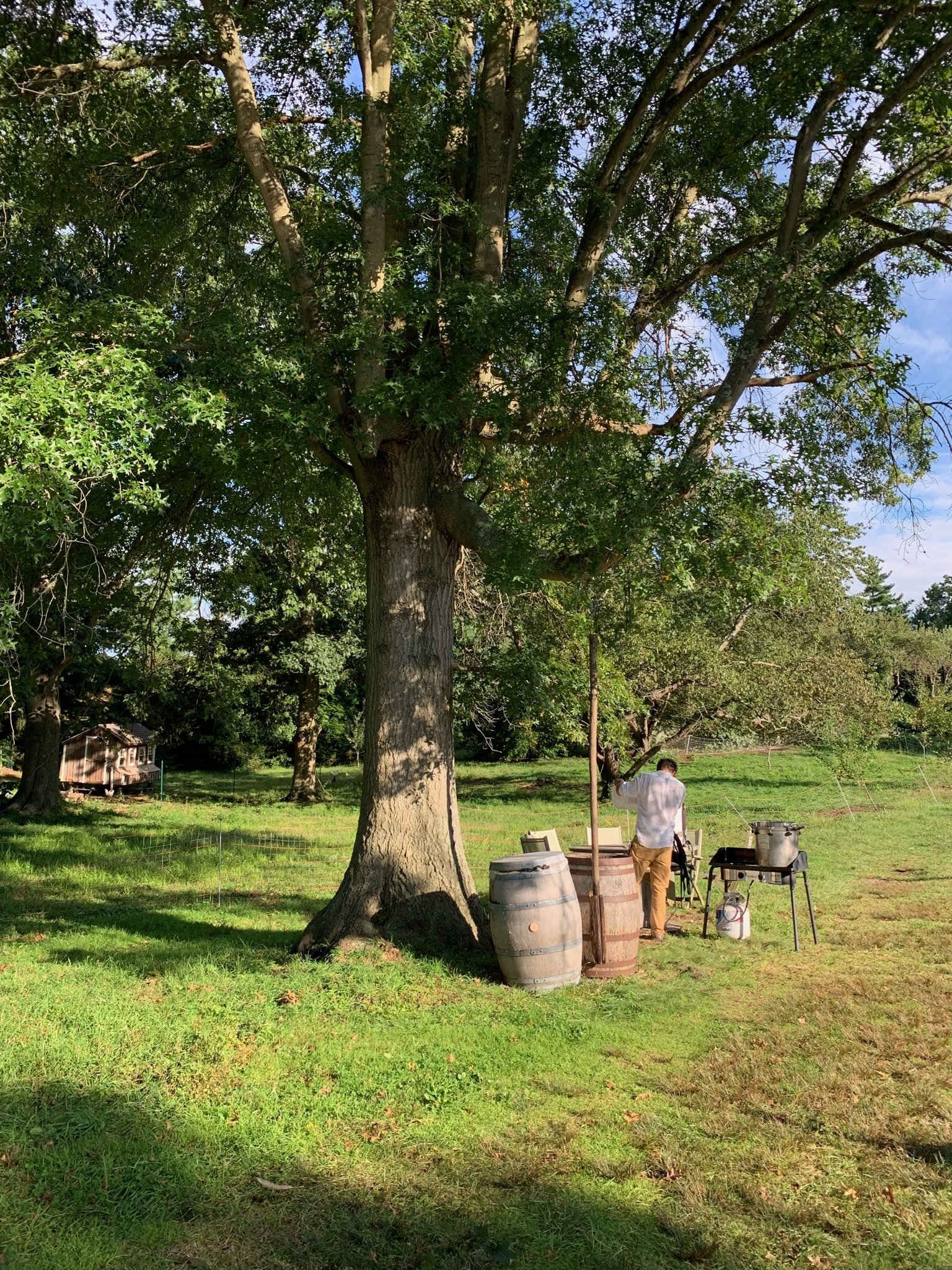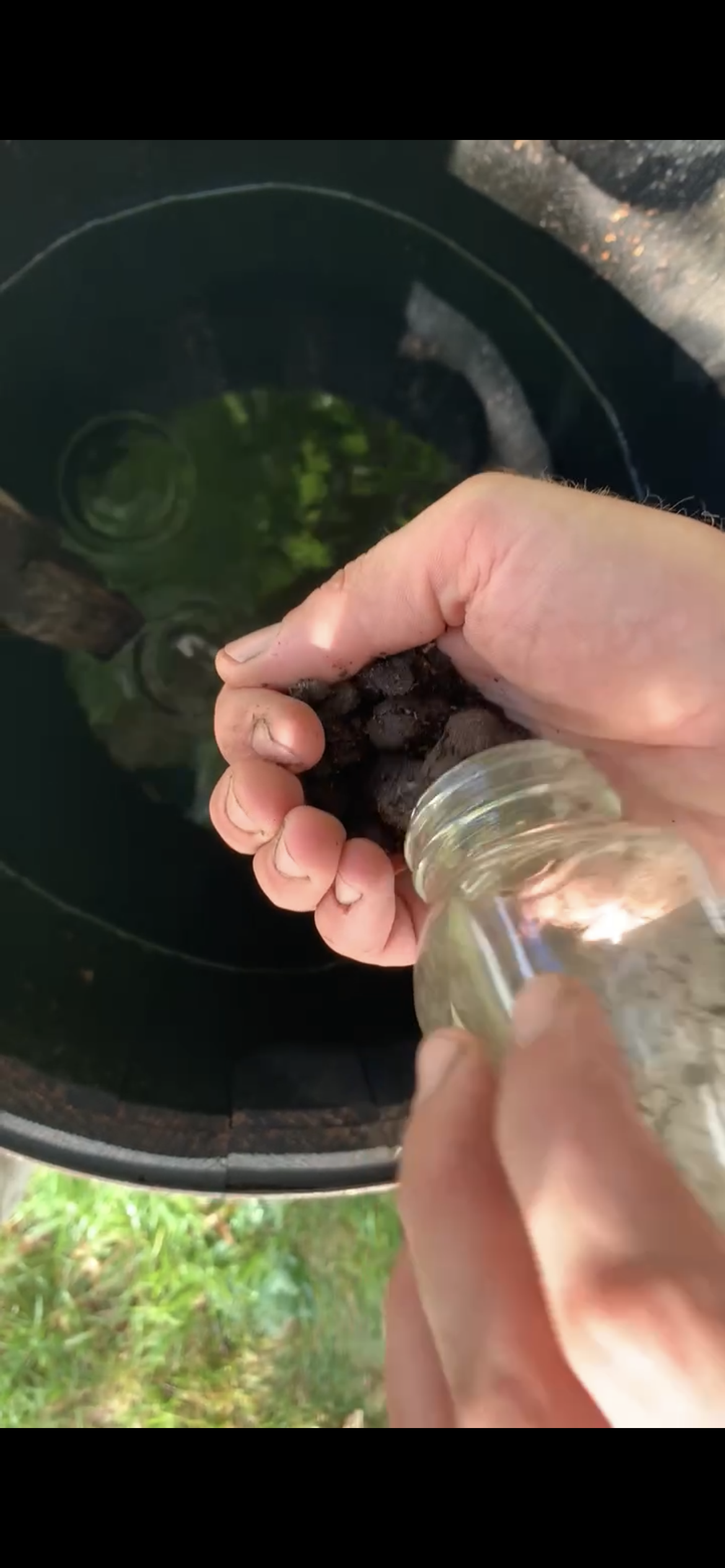BD500
It’s time to get a little dirty. But not just any ol’ dirt! – today we’re talking about Biodynamic preparations, a cornerstone of the Biodynamic farming method that was pioneered almost 100 years ago by the father of Biodynamic agriculture, Rudolph Steiner. It was in 1924 that he presented a series of lectures addressing soil degradation and the detrimental effect of chemical fertilizers. In outlining this new approach to agriculture, he presented nine different preparations to safeguard and strengthen soil fertility as the foundation for optimal health. Later, Ehrenfried Pfeiffer would refine the recipes for these preparations as well as give them the names we know today. For the next couple of blog posts, we’ll discuss the first two of these preparations, opposite formulas which work in complementary ways: Biodynamic preparation 500, also known as BD500 or Horn Manure; and Biodynamic preparation 501, also known as BD501 or Horn Silica.
Today, we’re focusing on BD500, a robust biological soil activator. Think of it as being similar to yeast in breadmaking – how it produces bubbles in the dough that gives the bread an aerated crumb. Similarly, BD500 contains a diversity of microorganisms like bacteria, and fungi that we will spray our soil with. The invisible life forms carried in this prep will feed on the dead carcasses of other microorganisms and make minerals available to plants. By increasing the diversity and quantity of soil life, we’re able to out-compete harmful pathogens! BD500 also supports healthy earthworm populations, leading to rich dark soil due to the worm's ability to produce humus. No, not the hummus you enjoy with pita bread. Humus is the vital excrement that worms leave behind as they eat dead plant roots and organic matter. They recycle the earth, leaving behind lots of air tunnels resembling our spongy bread structure. As they work their way through the earth, this “soil crumb” is lined with precious colloidal humus substance. On the other hand, if soil is killed with agrochemicals, and compacted through tilling and the use of heavy machinery, it becomes unable to absorb water and hold enough air to support life. This is why in Biodynamic farming we go the extra mile and encourage the worms to do all that work!
So, what exactly is BD500 and how is it prepared? Well, we begin with cow manure, which is packed into the horn of a cow (more details on this in a future blog post). The horns are then buried in the Autumn and through the winter. As with all tenets of biodynamic farming, the process is built upon the wise rhythms of nature. Think of Autumn as a time when the land takes a deep inhalation, and though life above ground may be slowing down, it is actually becoming most active below the surface of the soil. During winter time, crystalizing and formative forces reach their peak, allowing the manure to undergo a metamorphosis. When the horns are finally dug up in early spring, the manure will have been transformed into a dark, odorless material.
BD500 is best applied in the spring and fall, and in the evening, when the soil is cool and will best harness all the power this biodynamic preparation has to offer. We then mix the prep with lukewarm rain water, which provides an ideal environment for microorganism reproduction. Just one small handful of the preparation in 3 to 5 gallons of water is enough to cover one acre of land! We stir this mixture for an entire hour, forming deep vortexes in alternating directions, and creating a strong, bubbly chaos in between whirlpools. This process deeply oxygenates the water, triggering exponential biological growth. While the stirring process may seem quite grueling for us who live a fast-paced life, it can provide an ideal opportunity to meditate, strengthen our will, and infuse our energies into the mixture. This helps us connect with the land and with ourselves. Once it’s ready, its finally time to spray!
But the clock is ticking – we only have one hour to make the goodness of BD500 reach every corner of the farm, before it starts to die and lose effectiveness! So, we diligently spray the potentiated liquid with a backpack sprayer, or if you have a small garden, a bucket and a bundle of twigs will do the trick. It must be sprayed in thick droplets, in order to get down there and reach the earth. By spraying 500 and loving our soil, we have started an upward virtuous cycle, leading to greater root development and overall plant resilience. The benefits keep moving up through the animal kingdom, all the way to us humans!
For our next post, we’ll talk about BD500’s helpful counterpart BD501, Horn Silica – a sort of yin to 500’s yang, which uses the power of quartz crystals to assist plants in simulating photosynthesis, strengthening their immune response, enhancing the flavor and aroma of fruits, and more! Stay Tuned!





